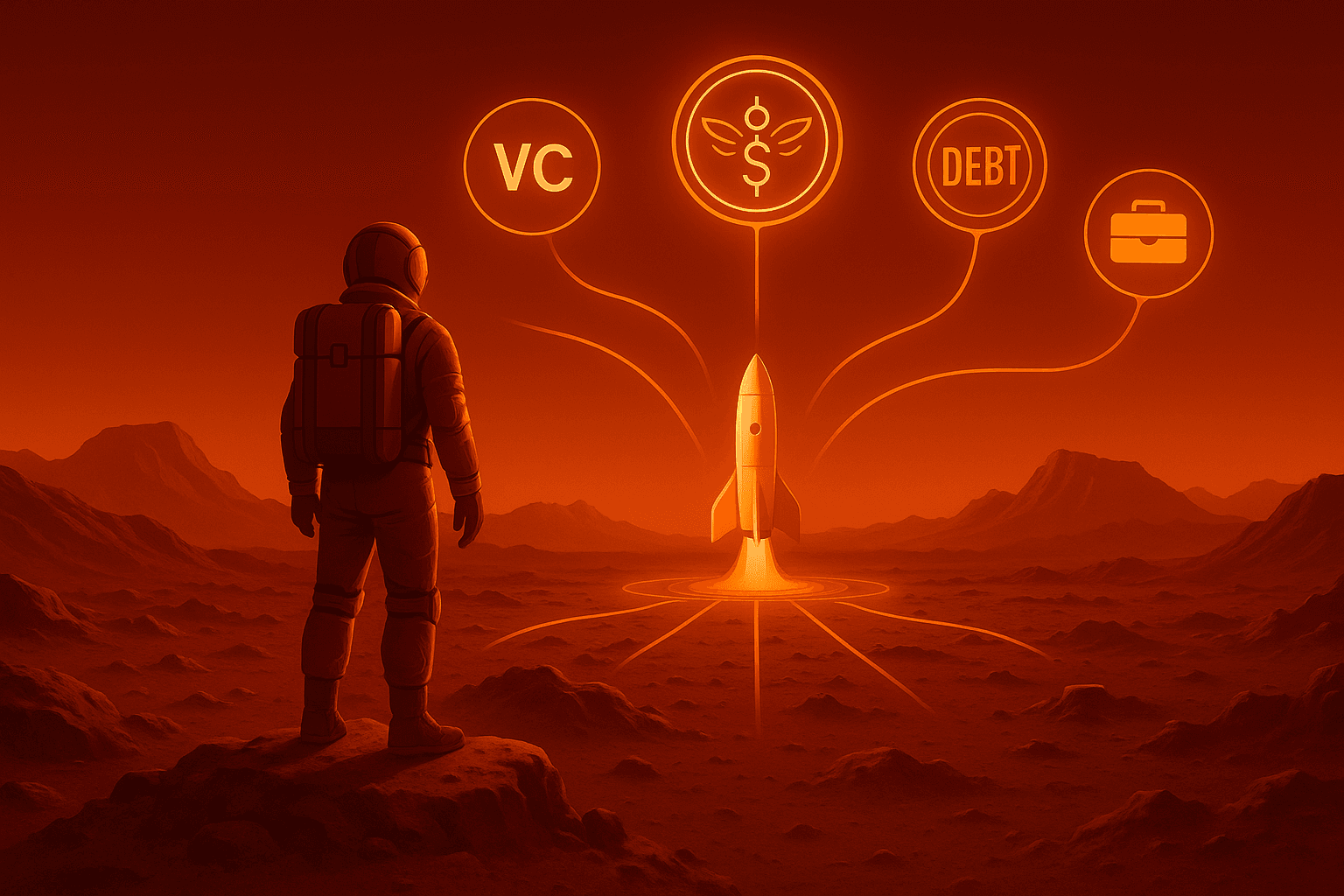How Early-Stage Startups Are Valued in 2025: A Guide for Founders and IR Professionals
Early-stage startup valuations in 2025 are tougher, slower, and more scrutinized. This in-depth guide explains how founders and IR professionals should approach pre-seed to Series A valuation, drawing on YC benchmarks, tier-1 fund recommendations, and sector-specific data. Covers valuation methods, market ranges, SAFE vs priced rounds, pitfalls, and why Altss is the edge for defending valuations with LPs.

How Early-Stage Startups Are Valued in 2025: A Guide for Founders and IR Professionals
Valuing a pre-seed, seed, or Series A company in 2025 is a balancing act between ambition and credibility. Founders need to raise enough capital without overpromising. Investors are cautious after years of market volatility, scrutinizing risk more carefully than ever. Investor relations teams are stuck in the middle—translating founder narratives into numbers LPs can believe.
In an environment where venture dollars are concentrated in fewer sectors, cycles are longer, and liquidity is harder to achieve, early-stage valuation frameworks have shifted. Founders can’t rely on yesterday’s heuristics. LPs demand more transparency, and tier-1 funds are stricter about milestones.
This guide explores the forces shaping early-stage valuation in 2025, benchmarks from YC and top funds, sector differences, structural pitfalls, and tactical recommendations. It also shows how Altss provides the modern edge for both founders and IR teams.
Why Traditional Models Don’t Work
Classic methods like discounted cash flow and public market comparables are largely irrelevant for companies raising their first rounds. Pre-seed startups rarely have recurring revenue. They don’t have audited financials. Their markets are too new for public comps to be meaningful.
Investors know this. At the early stage, valuation is more art than science. The goal isn’t precision, but plausibility: a valuation range that balances risk, upside, and dilution.
That plausibility is shaped by five factors.
The Five Drivers of Early-Stage Valuation
Team strength is always weighted most heavily. Repeat founders, deep technical builders, or leaders who have scaled before reduce perceived risk. Tier-1 VCs routinely pay a premium for teams that can hire and execute.
Market size and timing determine upside. Total Addressable Market matters, but in 2025 the more important question is why now? YC partners emphasize that startups must ride structural tailwinds—whether AI infrastructure, energy transition, or supply chain reconfiguration.
Product defensibility is under sharper scrutiny than in past years. Investors have been burned by “AI-washing” companies that simply bolt GPT wrappers onto SaaS. The bar is now higher: Is the technology foundational? Does it create real moats via data, network effects, or IP?
Traction signals matter more than they used to. Even modest MRR, signed pilots, LOIs, or strong waitlist demand can shift valuation dramatically. YC analysis shows that startups with just $150–500K ARR are raising $2M at $20–25M post-money. Meanwhile, mid-tier companies with only $3–5K MRR are still raising similar checks, but at lower $15–20M posts.
Milestone clarity is decisive. Investors want founders who can map capital to outcomes. Saying “with $2M we’ll build an MVP, sign 10 pilots, and hit 1,000 DAUs by June 2026” is more powerful than ambitious but vague projections.
The Methods Investors Use
Investors rely on adapted frameworks, not spreadsheets.
The venture capital method works backwards from an assumed exit value—say $100M in five years. Apply a 10x multiple, discount at 50%, and today’s valuation lands near $10–15M.
The scorecard method starts with regional benchmarks. If the average pre-seed in the Bay Area is $5M pre-money, investors adjust up for a strong team or down for weak traction.
The milestone method prices in tranches. Investors might commit $2M but release half now, the rest only if DAUs or ARR targets are met.
The Berkus method values pre-revenue startups by buckets: idea, prototype, team, relationships, rollout. It caps at $2–3M pre-money but remains useful at the earliest stages.
All are blunt tools. None are precise. But they provide frameworks investors can defend to LPs.
Market Benchmarks in 2025
Valuation benchmarks provide the backdrop.
- Pre-seed valuations average around $5.7M, with medians near $5.3M.
- SAFE caps under $250K have climbed to $7.5M in 2025, up from $6.5M last year.
- SaaS pre-seed round sizes hover near $700K.
- AI startups are priced higher: $3.6M median pre-seed, $10M seed, $45M Series A.
- Series A round valuations often land at $40–50M pre-money, though bridge rounds are lower.
YC data provides sharper context: top 5–10% of companies, often with ARR in the $150–500K range, raise $2M at $20–25M post-money. Mid-tier companies with weaker traction raise at $15–20M post. Outside YC, median seed valuations are closer to $12M pre-money with ~$3M round sizes.
The difference highlights the power of brand, traction signals, and team narrative.
Structure Matters as Much as Price
Instrument choice—SAFE vs priced round—carries weight.
SAFE rounds dominate pre-seed. Founders love the speed and simplicity. But stacking multiple SAFEs with different caps and discounts creates dilution chaos, complicates LP updates, and spooks later VCs.
Convertible notes share the problem, with the added complexity of interest and maturity dates.
Priced rounds, more common at seed, carry heavier legal overhead but bring clarity. Valuation, ownership, and dilution are explicit. For IR professionals, priced rounds make LP reporting cleaner: no hidden conversion math, no uncertain dilution scenarios.
Tier-1 funds increasingly prefer priced rounds by seed stage. YC investors caution founders not to overuse SAFEs—what looks easy today can cost dearly in Series A.
Sector Context Shapes Valuation
Sectors command different premiums.
In AI, valuations are inflated—but fragile. Infrastructure providers like Mistral and Anysphere reached multi-billion valuations in 2025, showing investor appetite. But those numbers are reserved for teams with defensible models, data moats, or unique distribution. Founders who can’t explain compute costs, unit economics, or regulatory risk won’t command premiums.
Climate and energy transition startups attract larger early rounds, but valuations are tied to policy stability and capital efficiency. Government incentives support growth, but permitting and politics constrain multiples.
Healthcare and biotech valuations hinge on milestone progress. A molecule with promising trial data may price higher than a SaaS app with recurring revenue, but investors apply heavier discounts for risk.
SaaS remains steady. Investors reward metrics like retention, churn, and CAC/LTV ratios. Even modest MRR growth drives valuation uplifts if backed by strong unit economics.
Pitfalls to Avoid
Founders and IR teams often stumble in three areas.
First, they lean too heavily on revenue multiples. Multiples obscure cost structures, especially in AI where inference costs scale non-linearly. Investors want unit economics, not just ARR headlines.
Second, they underestimate dilution. Stacking multiple SAFEs with caps at $6M, $10M, and $20M can result in far more founder dilution than expected. LPs dislike opaque ownership.
Third, they overpromise. Inflated projections backfire in a cautious market. Missing milestones erodes credibility faster than pricing conservatively and delivering.
Tactical Advice for Founders
Founders should approach valuation with ranges, not absolutes. Saying “we’re targeting $6.5–8.5M pre-money based on recent comps” signals research while leaving room for investor input.
Milestone clarity is critical. Tie capital raised directly to specific deliverables.
Demonstrate de-risking. Investors think in categories: technical, execution, market. Show how each risk has been reduced. For AI startups, this might mean lowering compute costs or securing proprietary data sources.
YC partners repeatedly remind founders that valuation is a negotiation of risk. The more risk you remove, the more valuation you can justify.
Tactical Advice for IR Professionals
For IR teams, valuation is about LP trust. Reporting on new deals must contextualize valuation against market comps and historical benchmarks. Highlight round structures—SAFE vs priced, staged vs upfront—and clarify dilution.
Altss provides an edge here. Instead of relying on stale databases, IR teams can benchmark pre-money values across sectors in real time, identify comparable startups, and surface investor sentiment shifts. This helps LP updates read as credible and transparent, reducing friction in fundraising cycles.
What YC and Tier-1 Funds Recommend
YC data shows a spectrum: top-tier startups with clear traction raise $2M at $20–25M post; mid-tier startups with weaker revenue raise at $15–20M. Tier-1 funds emphasize traction signals, technical defensibility, and clean structures as non-negotiable.
Recommendations from YC and top funds boil down to:
- Don’t anchor too low—credible traction deserves credible valuation.
- Use traction rigorously—even modest ARR or LOIs justify higher caps.
- Be mindful of SAFE stacking—priced rounds bring clarity when you can negotiate them.
- Keep dilution in check—most seed rounds should land around 10–15% equity given up.
- Benchmark against peers—show LPs and investors that your valuation is consistent with what top-tier startups are achieving.
Why Altss Provides the Edge
Legacy databases show history. But valuation is about what’s happening this week.
Altss combines OSINT, allocator listening, and entity resolution to deliver live comps and investor appetite data. For founders, this means walking into negotiation with evidence of what comparable companies just raised at. For IR teams, it means updating LPs with credible, real-time valuation context.
Altss shows:
- The current pre-money benchmarks in your sector and geography.
- Which LPs and family offices are paying premiums for themes like AI or climate tech.
- What SAFE caps, discounts, and ownership terms are being used in similar rounds.
- How dilution patterns play out across YC and tier-1 fund-backed companies.
With Altss, valuation isn’t a guess—it’s a defensible story grounded in current market behavior.
Conclusion: Valuation as Credibility
In 2025, early-stage valuation is less about exuberance and more about credibility. Founders who demonstrate traction, clarity, and defensibility will win fair pricing. IR teams that provide transparent, data-backed updates will keep LP trust.
YC companies and tier-1 funds are setting the benchmarks: $20–25M post-money for strong seeds, $15–20M for mid-tier, ~$12M pre-money outside the YC orbit. SAFE caps are climbing, but clarity on structure and dilution matters more than headline numbers.
Altss ensures you’re not relying on stale data or anecdote. It gives you the ability to benchmark in real time, detect investor sentiment shifts, and communicate valuations credibly to LPs.
Valuation in 2025 is not about what you’re worth today—it’s about how credibly you prove you’ll compound tomorrow. With Altss, that credibility is backed by data, not just story.
Related articles

Anchor Investors for Emerging Managers & Startups: The 2025 Playbook
A step‑by‑step playbook for landing an anchor investor (or LP), understanding anchor vs. lead, structuring first closes, and creating momentum in your round.

Top 10 Startup Funding Sources to Know in 2025
Founders win in 2025 by sequencing capital precisely—not loudly. This Altss field manual breaks down 10 funding sources, when to use each without signaling risk, and how OSINT-led mandate intelligence helps you raise from the right backers at the right time.